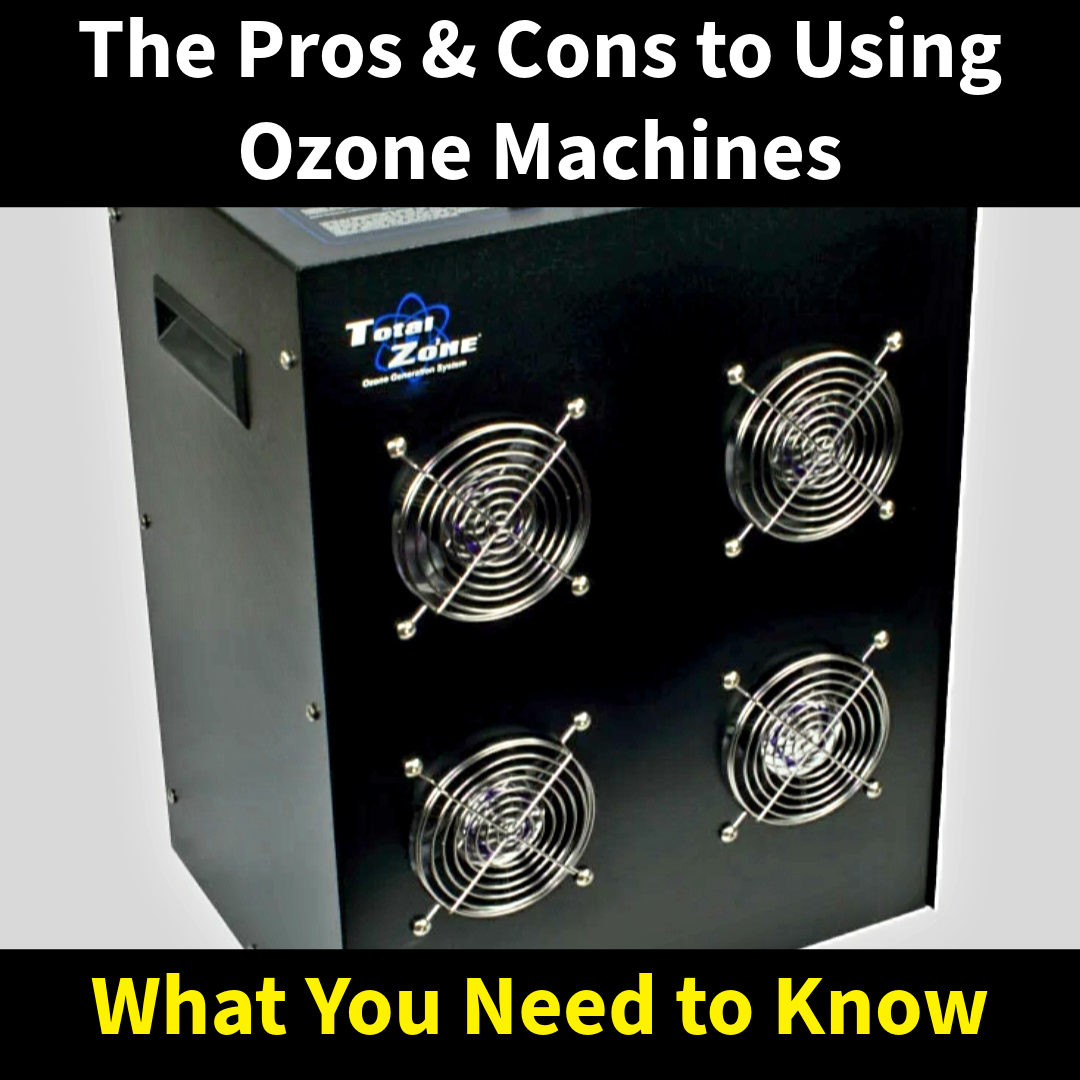When disaster strikes—whether it’s a flood, fire, or a crime and/or trauma scene cleanup—restoration professionals often rely on specialized equipment to bring buildings back to safe, habitable conditions. One of the tools used in disaster restoration is the ozone machine, a device that releases ozone gas (O₃) into the air to help eliminate odors, kill mold spores, and neutralize airborne contaminants. While effective, ozone machines come with both benefits and potential drawbacks. Here’s an in-depth look at how they function in disaster restoration and the pros and cons to consider before using them.
What Is an Ozone Machine, and How Does It Work?
An ozone machine generates ozone gas by splitting oxygen molecules (O₂) into individual oxygen atoms that then bind with other oxygen molecules to create ozone (O₃). This third oxygen atom is highly reactive, allowing ozone to attach to and break down odor-causing particles, bacteria, and mold spores. This powerful oxidizing effect can make ozone machines useful in disaster restoration work, but it also means they must be used carefully and correctly.
Pros of Using an Ozone Machine in Disaster Restoration
1. Effective Odor Removal
- Benefit: Ozone machines are well-regarded for their ability to neutralize strong, persistent odors caused by smoke, mold, mildew, water damage and the odors related to crime and trauma scene cleanup. In cases of fire or smoke damage, for example, these machines can help eliminate the burnt smell, leaving the space fresh.
- How It Works: Ozone gas interacts with odor-causing particles on a molecular level, oxidizing them and breaking them down, which effectively removes the smell rather than merely masking it.
2. Mold and Mildew Control
- Benefit: Ozone gas is known for its ability to kill mold spores in the air, making it a useful tool in mold remediation. Mold can release spores that not only spread further but can also affect indoor air quality.
- How It Works: The ozone penetrates into small crevices where mold spores can hide, helping to sanitize areas that may be difficult to reach with other mold removal methods.
3. Reduction of Bacteria and Viruses
- Benefit: Ozone machines can help reduce the presence of bacteria and viruses in an affected space. In restoration after floods or water damage, for instance, bacteria can often flourish, creating sanitation issues.
- How It Works: The oxidation process involved in ozone treatment can damage the cell walls of microorganisms, effectively neutralizing bacteria and viruses
4. Non-Toxic Residue
- Benefit: Once ozone breaks down, it reverts back to oxygen, leaving no toxic residue. This contrasts with some chemical disinfectants that may leave residues requiring additional cleanup.
- How It Works: Because ozone is a gas that naturally breaks down over time, it dissipates quickly once the machine is turned off and the space is ventilated, reducing chemical impact on the environment.
Cons of Using an Ozone Machine in Disaster Restoration
1. Health Risks for Humans and Pets
- Drawback: Ozone is a powerful oxidizing agent, which can irritate the respiratory tract, causing symptoms such as coughing, chest discomfort, and throat irritation. It is also harmful to pets, plants, and other living organisms.
- Consideration: Rooms need to be fully vacated when an ozone machine is in use, and treated areas must be thoroughly aired out before re-entry. Restoration professionals should follow all safety guidelines to avoid prolonged exposure.
2. Potential Damage to Materials
- Drawback: Ozone is known to accelerate the degradation of certain materials, such as rubber, electrical wiring, and some plastics. Overuse in a building can lead to deterioration of items such as carpet backings, insulation, and rubber seals.
- Consideration: Restoration professionals should limit ozone exposure on sensitive materials and be cautious about where and how often they use ozone in enclosed areas with delicate items.
3. Limited Effectiveness on Certain Types of Mold
- Drawback: While ozone can kill mold spores in the air, it may not penetrate surfaces deeply enough to eradicate mold colonies growing in porous materials, such as drywall, carpet, or wood. This limits its effectiveness in comprehensive mold remediation, and is basically an additional tool, but not required or to be used as the primary method of mold remediation.
- Consideration: Ozone treatment should be seen as part of a larger remediation strategy and may be best used as a supplement to other mold removal methods, especially for mold that has already established itself in porous materials.
4. Regulatory and Safety Concerns
- Drawback: Some regulatory bodies and organizations advise against the use of ozone generators in occupied spaces due to the health risks involved. Ozone’s safety threshold is low, meaning that even minimal exposure can be harmful, and its production is regulated in certain areas.
- Consideration: Professionals should always check local regulations and ensure they are complying with any guidelines set forth by organizations such as OSHA and the EPA.
5. Temporary Results in Some Cases
- Drawback: Ozone machines may eliminate odors temporarily, but if the underlying cause of the odor remains—such as water damage that continues to harbor mold—odors may return.
- Consideration: Ozone treatment is often most effective when combined with comprehensive remediation techniques. For example, water-damaged areas need to be dried and repaired to prevent mold from recurring.
In the realm of disaster restoration, ozone machines can play a valuable role in addressing odors. However, their use should be balanced with caution and awareness of potential drawbacks. While ozone is effective for odor control and surface sterilization, its limitations with deeply embedded mold and its potential impact on health and materials must be carefully managed. When used correctly and in conjunction with other remediation methods, ozone machines can enhance disaster restoration efforts, helping to restore safe, fresh, and habitable spaces after fires, floods, and other disasters.

